Brown grass. Bare branches. That depressing patch of mud where your flower bed used to bloom. Winter has a cruel way of transforming your once-vibrant yard into something that resembles an abandoned lot.
Most homeowners assume this seasonal decline is inevitable—that a lifeless landscape is just the price you pay for living anywhere with actual seasons. But here’s the truth: your garden can absolutely thrive during the coldest months with the right approach.
The secret isn’t about fighting nature or spending a fortune on heated greenhouses. It’s about working with winter’s unique character to create a yard that looks intentional, beautiful, and alive when your neighbors’ gardens look like they’re auditioning for a post-apocalyptic movie.
Ready to turn your winter wasteland into a four-season showpiece? These design strategies will keep your outdoor space looking deliberately gorgeous all winter long.
1. Plant Evergreen Shrubs as Your Foundation
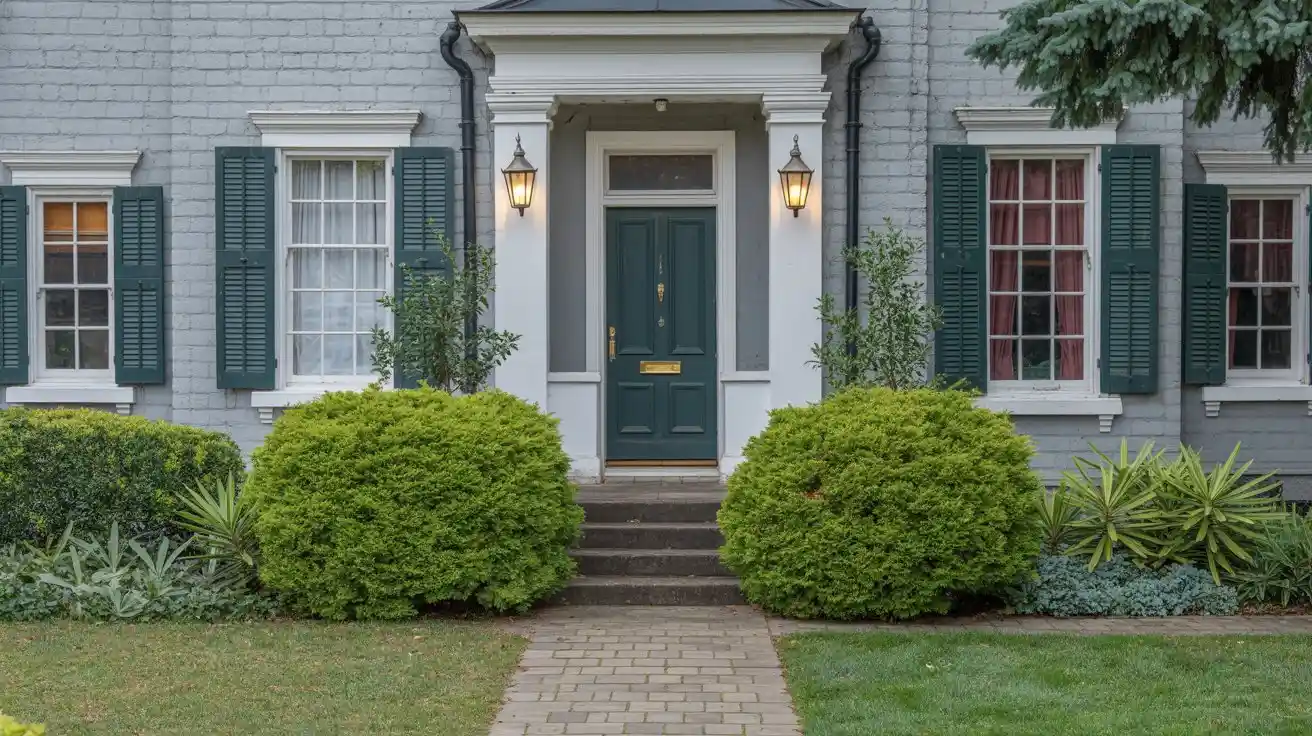
Your garden doesn’t have to look dead all winter. Evergreen shrubs stay green and give your yard structure when everything else is brown.
You’ve got two main types to choose from. Broadleaf evergreens like holly and boxwood have regular leaves that stay on all year. Conifers like juniper have needles instead. Both work great as a backdrop for your other plants.
Here’s something important: boxwood blight is killing boxwoods across the country. Try inkberry holly instead. It looks similar but doesn’t get sick.
For cold climates, Massachusetts Kinnikinnick survives down to zone 2. That’s seriously cold. Wintercreeper Euonymus works in zones 4-9 and spreads nicely as groundcover. Want flowers too? The Perfecto Mundo series gives you evergreen leaves plus blooms that come back every year.
Put your evergreen shrubs where you’ll see them from inside your house. Plant them in groups of three or five for the best look. They’ll give your winter garden the structure it needs while other plants rest.
2. Add Winterberry Holly for Spectacular Color
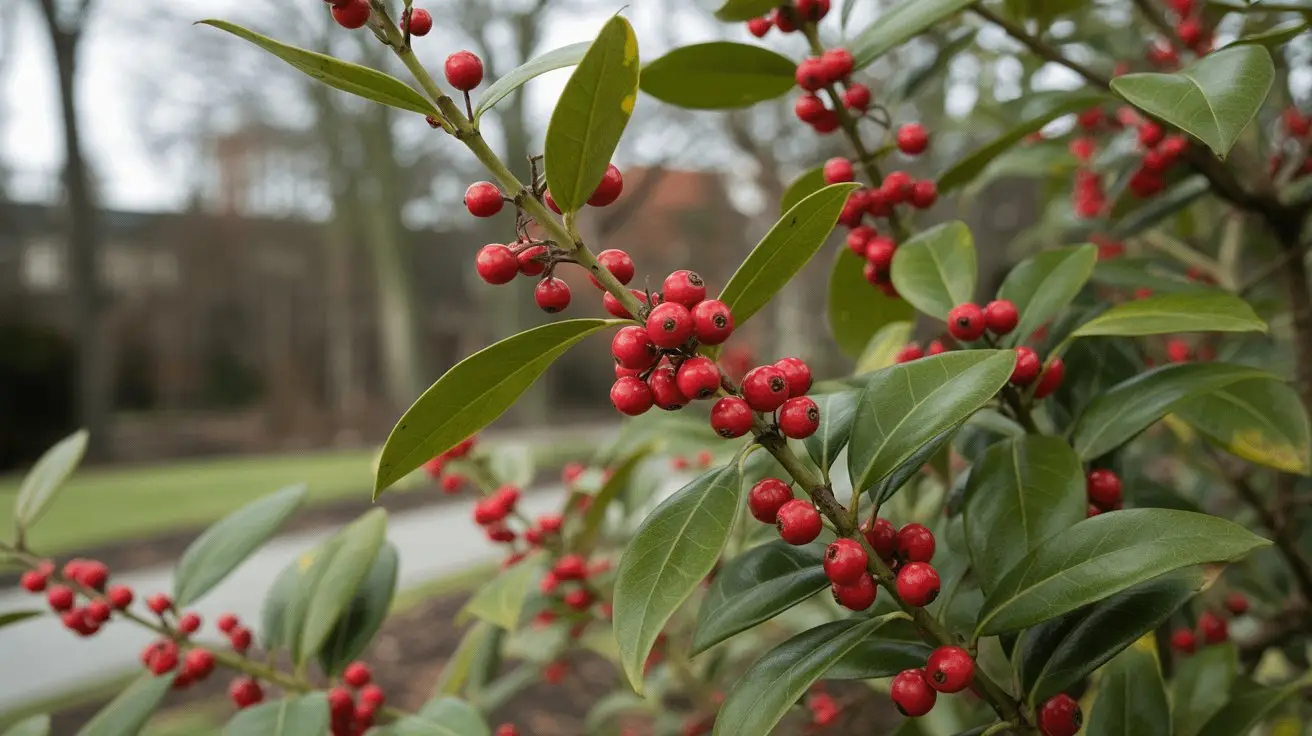
Want something that makes people stop their cars? Winterberry holly loses its leaves in fall, then covers itself in thousands of bright berries. We’re talking Christmas-level color that lasts all winter.
Here’s the catch: you need boy and girl plants. One male plant can pollinate up to five females. Only the females get berries, so plan accordingly. Mark which is which when you plant them so you remember.
This shrub is native and tough. It grows in zones 3-9 and likes acidic soil. If your azaleas do well, winterberry will too. Birds love the berries. You’ll see robins, mockingbirds, bluebirds, and cedar waxwings feasting on them all winter.
The Berry Heavy series produces extra-large fruits in red or gold. ‘Winter Red’ keeps its red berries longer than other types. ‘Red Sprite’ stays compact at 3-5 feet, perfect for smaller yards.
Plant winterberry where you’ll see it from your kitchen window. The bright berries look amazing against snow. Just remember: you need at least two plants, and one has to be male.
3. Incorporate Red Twig Dogwood for Vibrant Stems
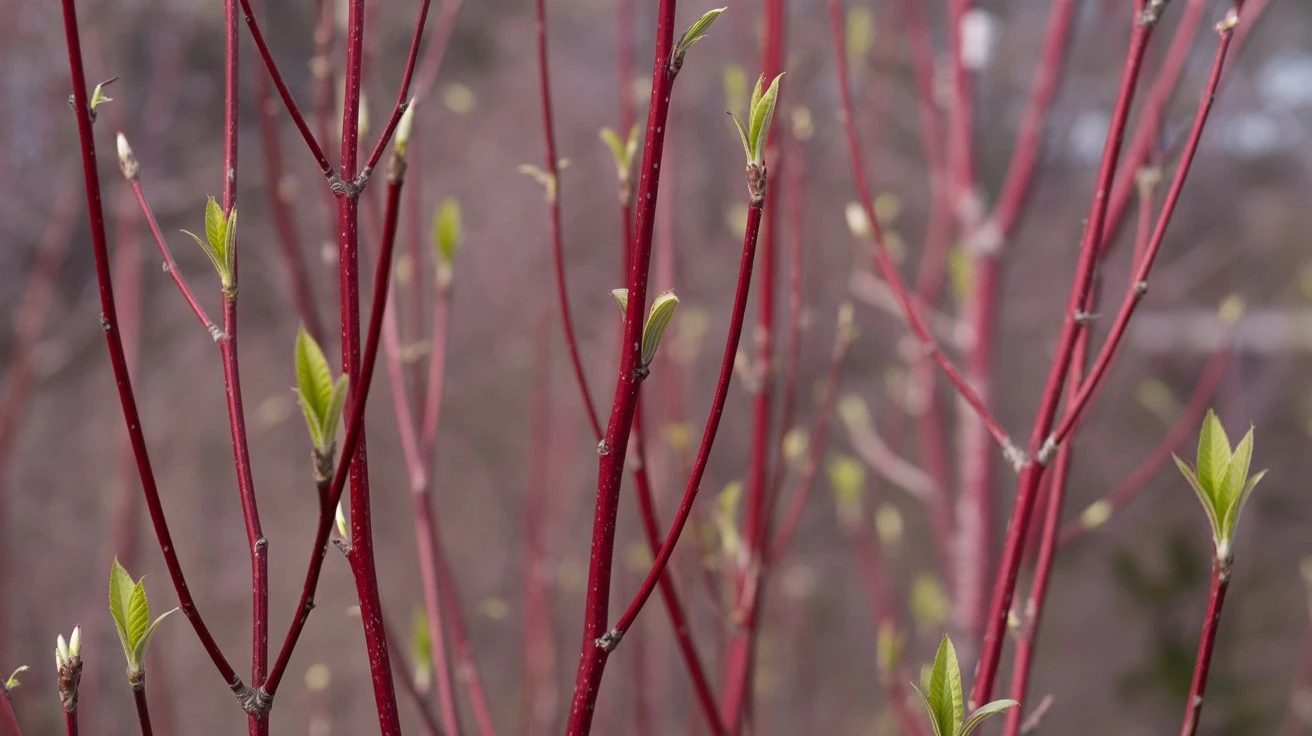
Red twig dogwood doesn’t mess around. Its stems turn bright red, orange, yellow, or coral in winter. They practically glow when the sun hits them.
This native shrub handles anything you throw at it. Hardy in zones 2-8, it grows in wet soil or drought. It’ll reach 6-9 feet tall and spread wide, so give it room.
In summer, you get white flowers that bring in pollinators. Birds eat the berries in fall. Then winter hits and those stems steal the show.
You need to prune this shrub to keep the color bright. Young stems are more colorful. In early spring, cut out the oldest stems at ground level. Or cut the whole plant down every two years. Sounds brutal, but it works.
Here’s a design trick: plant red and yellow-stemmed varieties together. The contrast is stunning, especially in snow. Pair red twig dogwood with Clethra alnifolia (sweet pepperbush) for flowers in summer and colorful stems in winter.
These shrubs look best in groups. Three or five plants create a thicket that shows off those stems even better.
4. Design with Ornamental Grasses
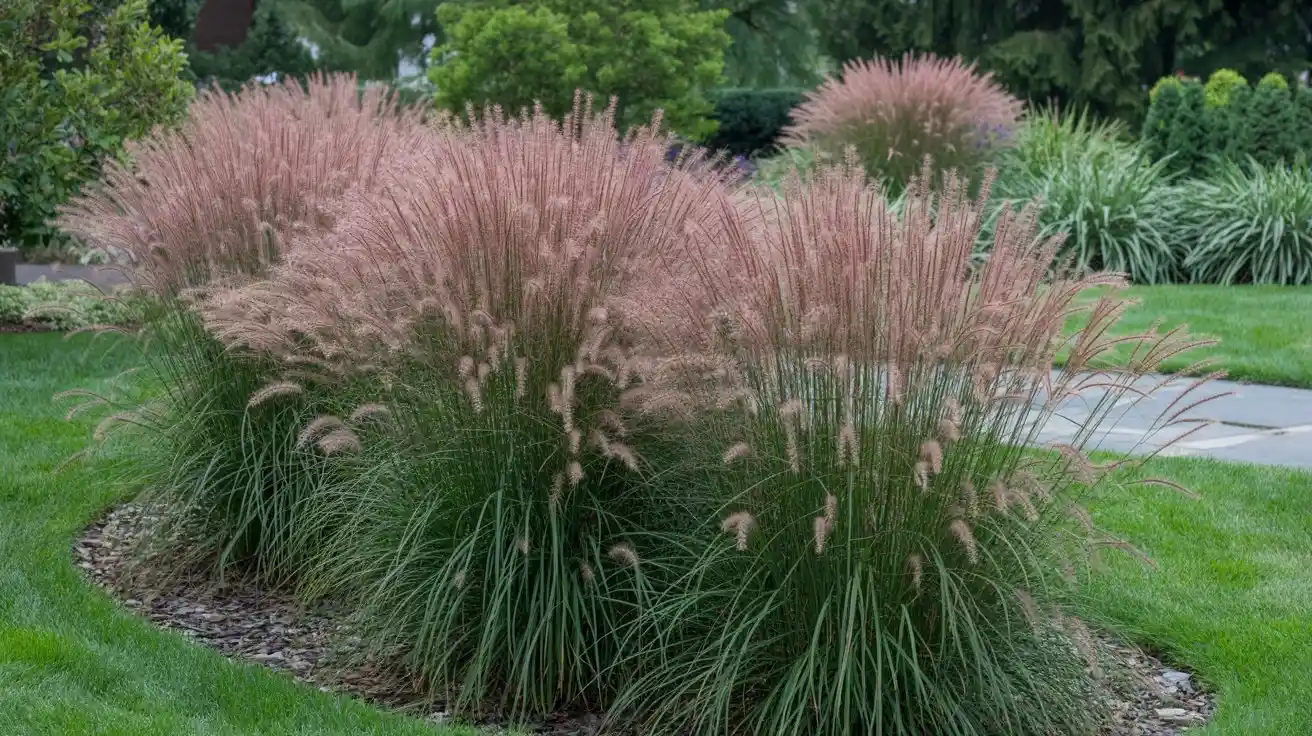
Ornamental grasses are your secret weapon for winter drama. They produce flower heads in fall that stick around all winter, catching snow and frost like they were designed for it.
Don’t cut them back in fall. Leave herbaceous grasses standing through winter. The dried leaves protect the plant’s crown from cold. Birds hide in them and eat the seeds. Plus they look incredible covered in frost.
Pick grasses based on your space and soil. Miscanthus sinensis (Chinese maiden grass) grows 5-8 feet tall with plumy silvery heads that wave in winter wind. It’s a showstopper but needs room.
Calamagrostis ‘Karl Foerster’ (feather reed grass) stands straight up like a column. It doesn’t flop over in snow. Perfect for tight spaces or formal gardens.
For dry areas, Bouteloua gracilis (blue grama grass) has seedheads that look like little eyelashes. It handles drought like a champ. Little bluestem turns reddish-bronze in winter and needs almost no water once established.
Plant grasses where morning or late afternoon sun shines through them. Backlit grasses look magical. Group them in odd numbers and mix heights for the best effect.
Wait until early February to cut them back. By then, you’ve enjoyed the show and birds have eaten the seeds. New growth starts soon after, and you’re ready for another year.
5. Plant Winter-Flowering Shrubs
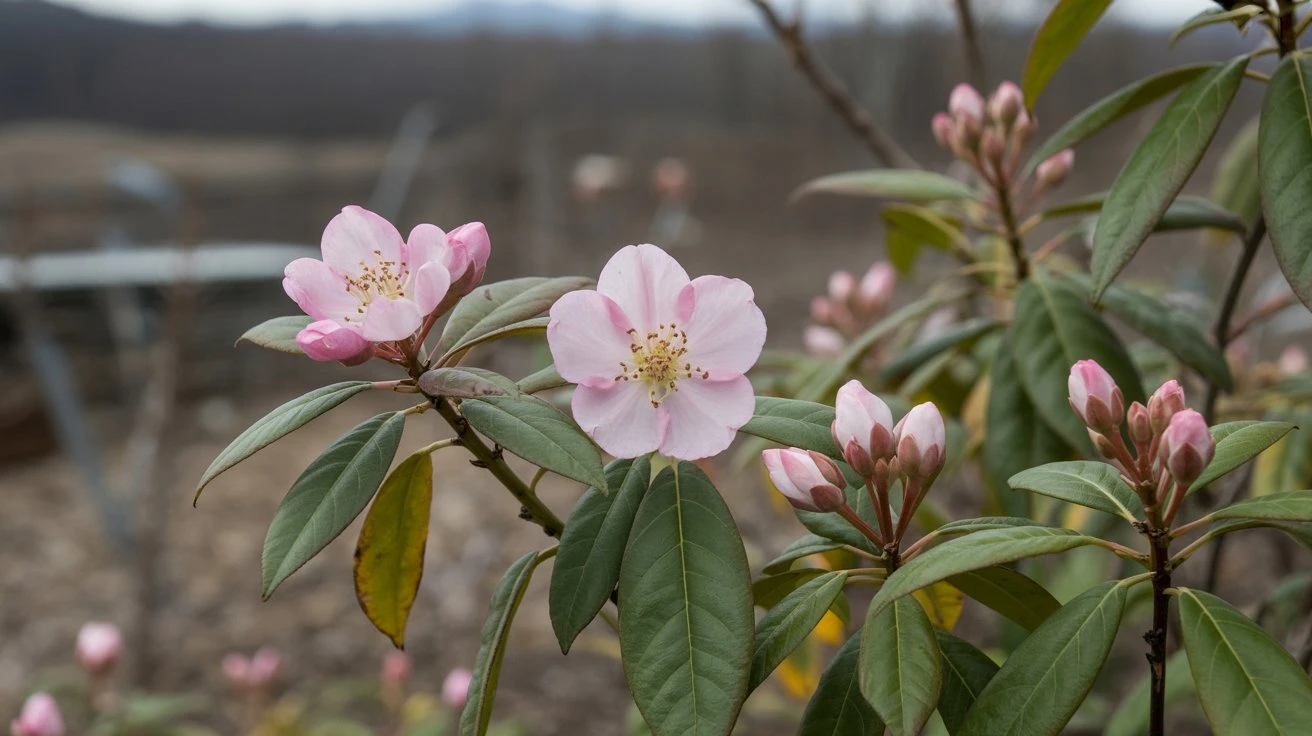
You can have actual flowers in winter. Not fake ones. Real blooms that smell good and make you forget it’s freezing outside.
Witch hazel and viburnum flower during the dormant season when everything else is sleeping. Winter jasmine produces bright yellow star-shaped flowers in late winter. They’re small but cheerful, like someone left the lights on.
Camellia blooms from fall through mid-spring in zones 7-10. It has shiny green leaves all year and multi-petaled flowers that look too fancy for winter. Pink, red, white—take your pick.
Winter heath produces bell-shaped flowers in white, pink, or lavender. It’s reliable even in cold climates and blooms for months. Those flowers last forever.
The fragrance is the best part. Witch hazel smells spicy and sweet. Some viburnums smell like honey. On a cold day when you’re sick of winter, that scent reminds you spring is coming.
Plant these shrubs near your front door or along your most-used path. You want to smell them and see them up close. Mix early, mid, and late bloomers so something’s always flowering. Your winter garden will look alive when your neighbors’ yards look dead.
6. Create Topiary for Structural Interest
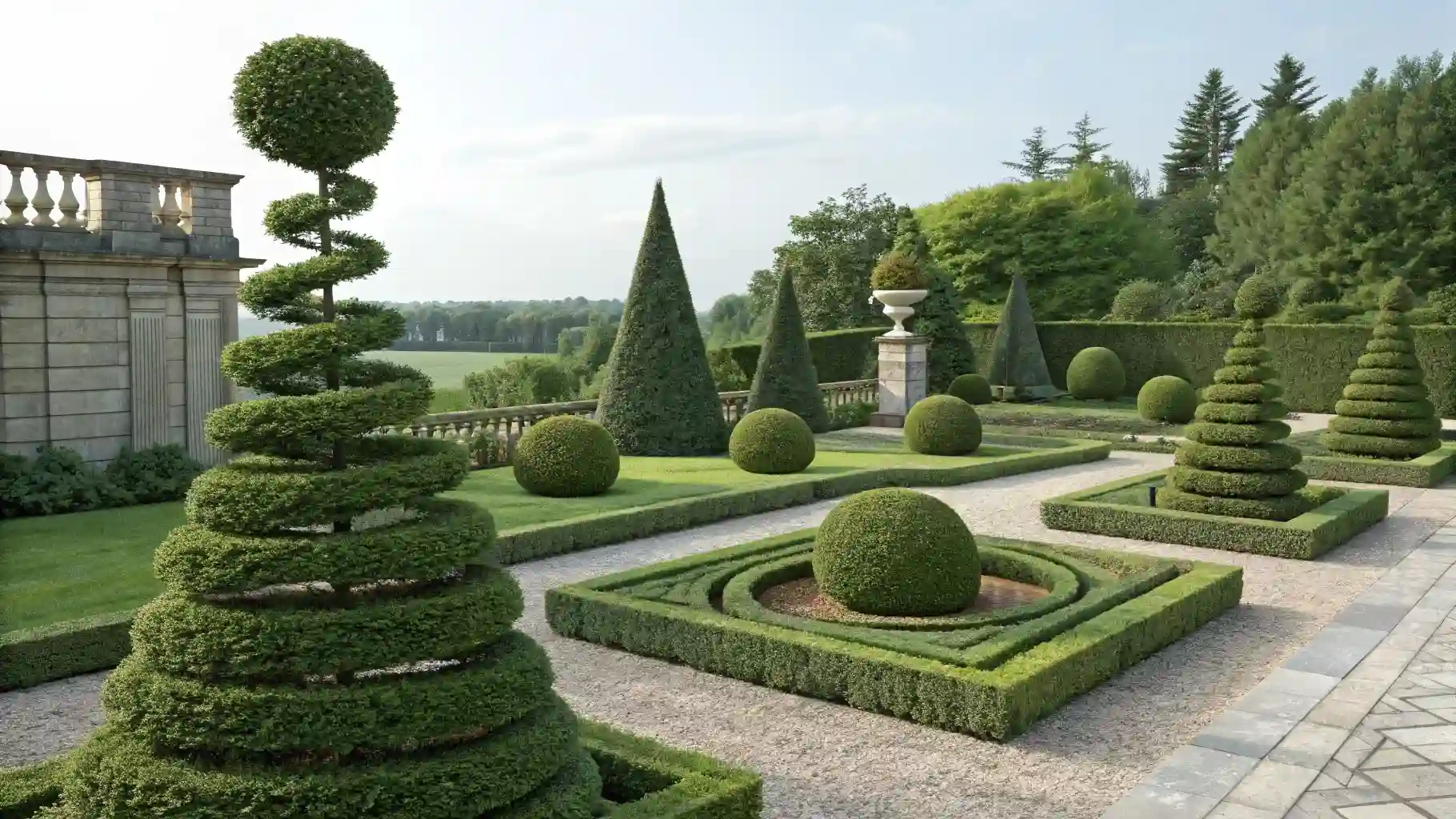
Topiary fixes this problem. These shaped evergreen shrubs add height and personality when you need them most. The 2025 trend reports show a “topiary takeover” happening right now in garden design.
Think of topiary as living sculptures. You can shape them into balls, spirals, or even animals. They give your garden structure that lasts all year.
Here’s the smart way to do it. Shape your topiary in summer when plants grow actively. Then trim them again in early fall to clean up before winter hits.
The best plants for topiary winter gardens are boxwood, yew, and holly. These evergreen shrubs stay green through cold months. They replace the height you lose when deciduous trees drop their leaves.
Start with simple shapes like balls or cones. You don’t need fancy skills. Buy pre-shaped plants or trim your own with hand shears.
Place topiary near entryways or at garden corners. They act like punctuation marks in your landscape. And they look especially good dusted with snow.
7. Add Early Spring Bulbs
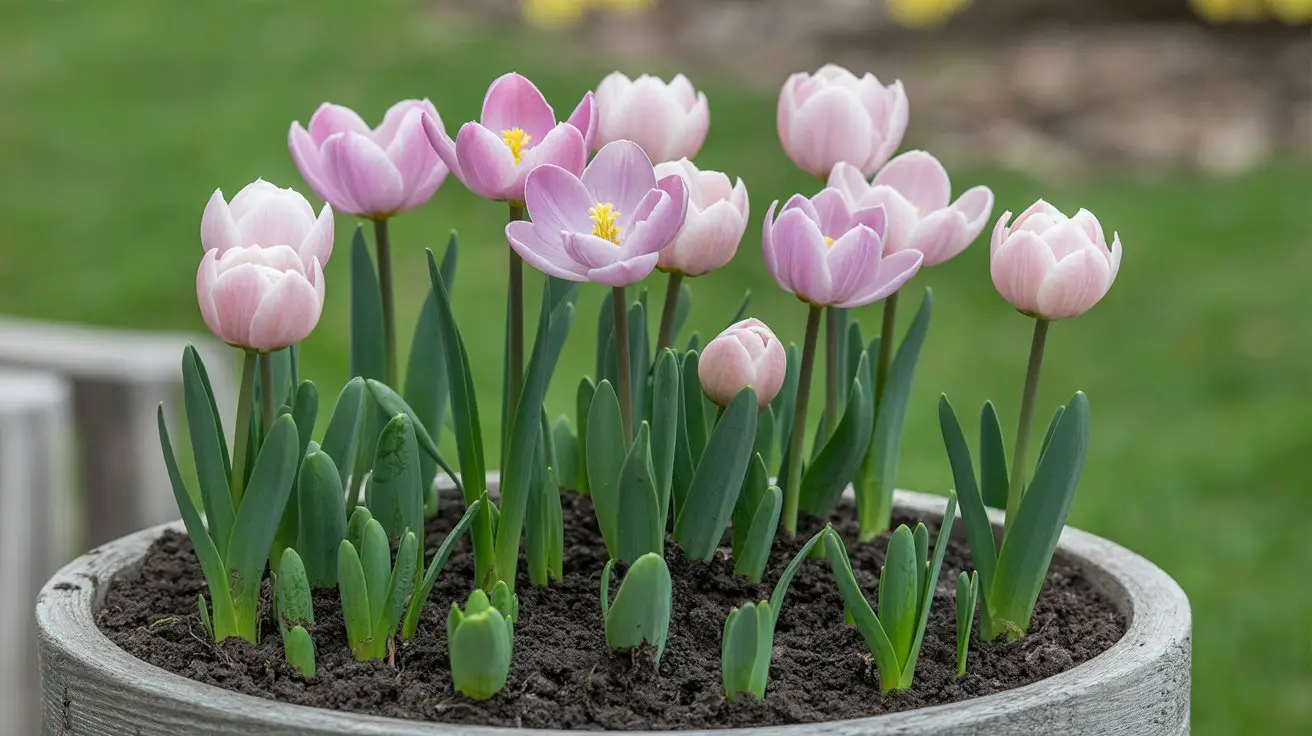
Early spring bulbs solve this. They push through snow when nothing else is brave enough to bloom.
Plant snowdrops and crocus in fall. They’ll peek through melting snow in late winter. Winter aconite is even tougher. It blooms with buttercup-yellow flowers while snow still sits on the ground.
Grape hyacinth shows up in late winter with a grape-like smell that reminds you spring is coming. Crocus needs that extended cold period to bloom properly, so don’t worry when they sit dormant all winter.
Here’s a pro tip. Plant bulbs in pots instead of directly in the ground. Pots drain better and you can move them around for seasonal impact. Place them where you’ll see them from your kitchen window.
Don’t plant just three or four. Mass plantings create drama. Use at least 25 bulbs in one area. They look like a colorful carpet when they all bloom together.
8. Incorporate Evergreen Perennials
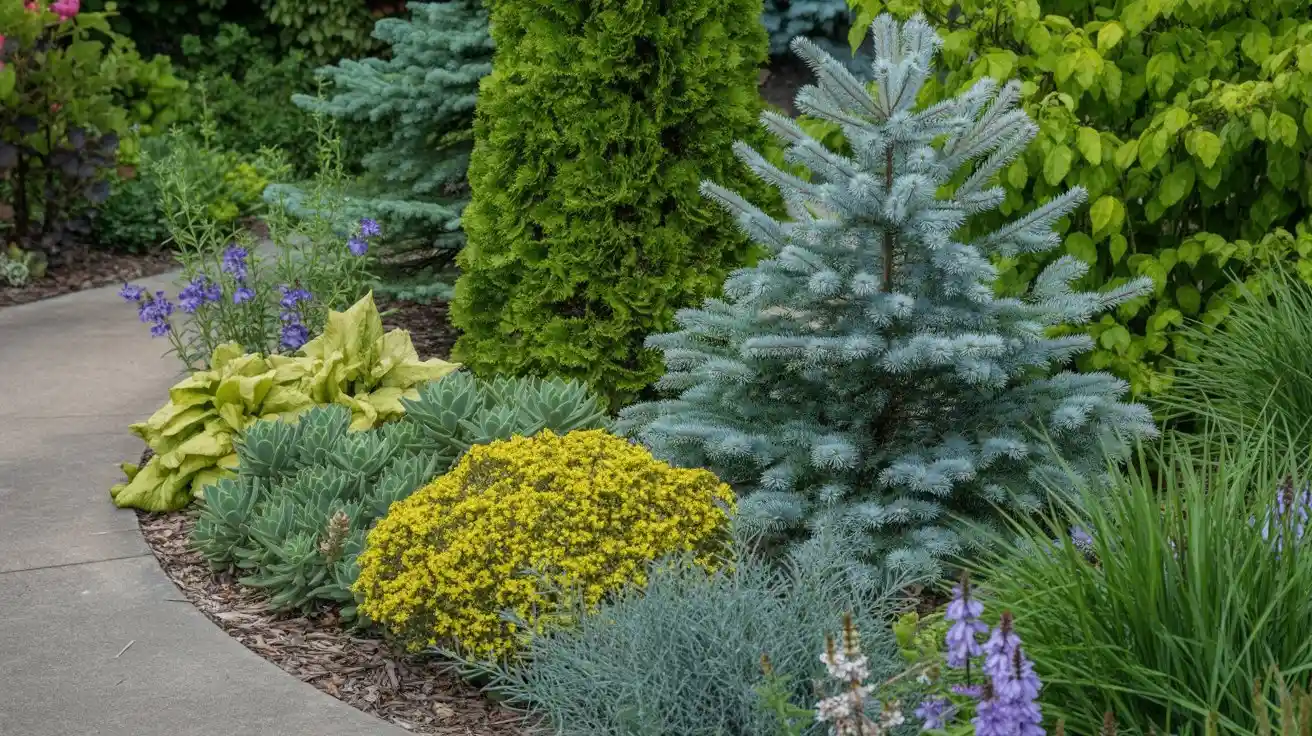
But some perennials keep their leaves all year. They give you winter foliage when you need it most.
Hellebore is the star here. It keeps last season’s foliage through winter. Then new flowers emerge in January or February, even in cold climates. The blooms last for months.
Bergenia has thick, cabbage-like leaves. Some varieties turn red or burgundy when temperatures drop. This color change adds interest to boring winter beds.
Christmas fern lives up to its name. It stays green through winter while other ferns turn brown. Robb’s spurge offers glossy paddle-shaped leaves that look fresh all season.
Yucca filamentosa brings sword-like foliage that’s both hardy and dramatic. It handles freezing temperatures without complaint.
Here’s what not to do. Don’t cut back old foliage too early. Leave it until it naturally dies. Cutting too soon decreases plant vigor and you’ll get fewer flowers next season.
Plant these evergreen perennials in groups. Mix different leaf shapes for texture. The round leaves of bergenia look great next to the spiky yucca.
9. Design with Colorful Bark
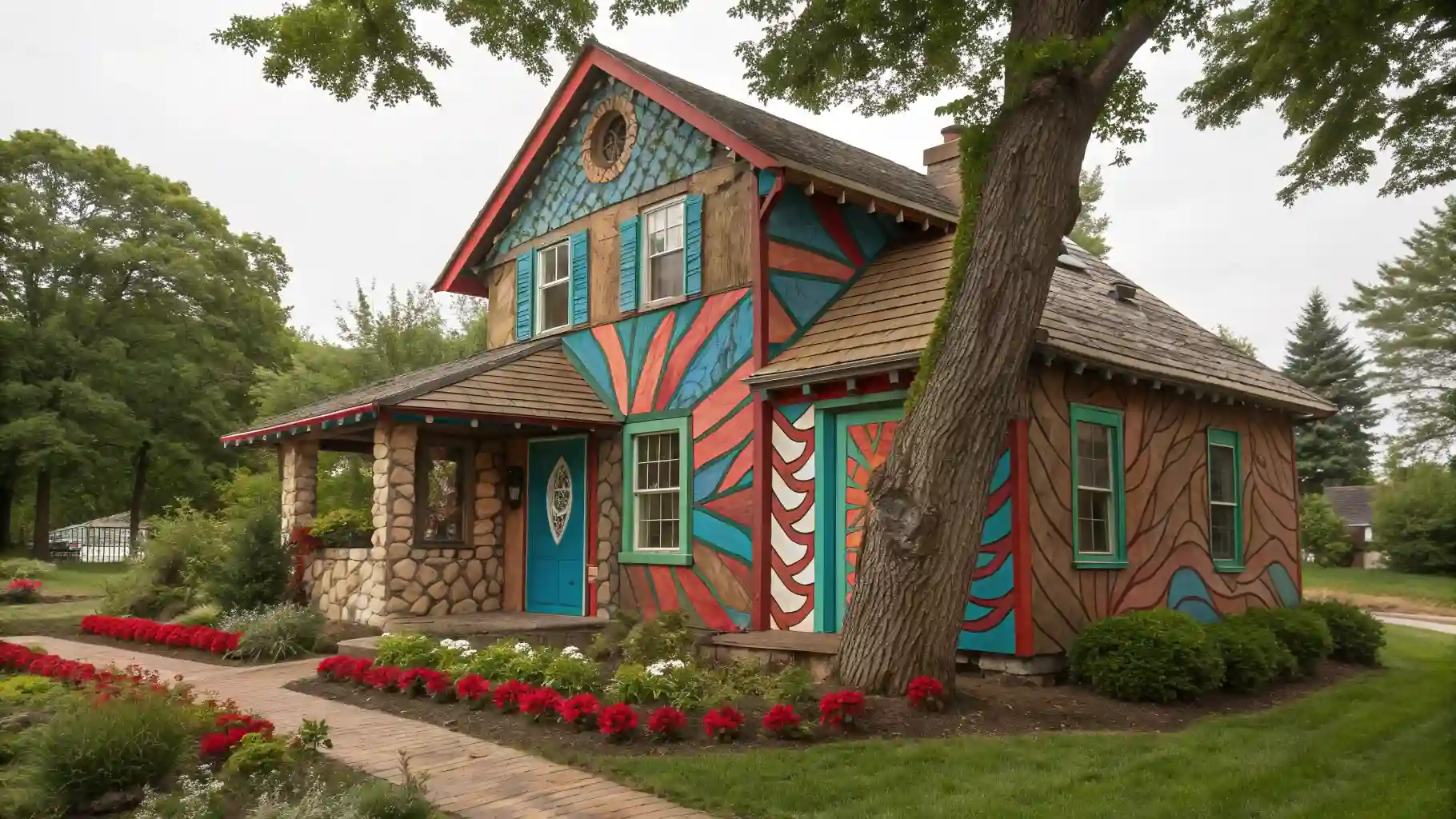
Winter gardens don’t have to be gray and brown. Tree bark can be beautiful.Look for trees and shrubs with interesting bark. They provide drama when leaves are gone.Birch trees show unique textures that stand out against snow. Some have white bark. Others have papery layers that peel naturally.
Paperbark maple is the showstopper. It offers peeling cinnamon-colored bark that gets better with age. The thin layers curl away from the trunk in sheets.Crape myrtle shows mottled, exfoliating bark in patches of tan, gray, and brown. It looks like a puzzle.
Place these trees where winter sun hits them. Morning or late afternoon light highlights the texture. You’ll see details you miss in summer when leaves hide the bark.Plant them near paths or patios. You want to walk past them and notice the bark up close.
10. Create Container Displays
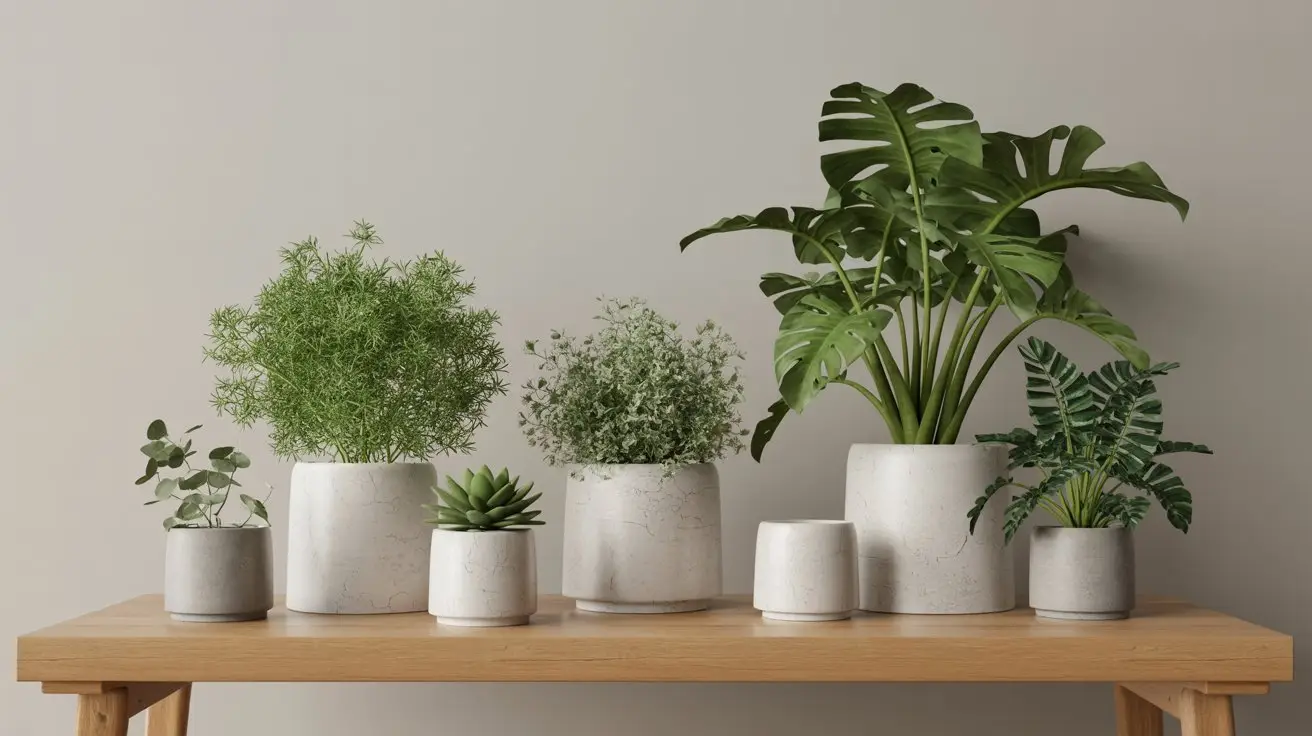
Pansies and violas bloom whenever the temperature climbs above 32°F. They pause during hard freezes, then bounce back when it warms up. Their cheerful faces appear throughout winter on mild days.
Swiss chard provides a vertical element with colorful stems in red, pink, or yellow. The leaves hold up through light frosts.
For year-round texture, add evergreen ferns, ivy, and sedges. They fill space and stay green no matter what the weather does.
Ornamental cabbage and kale come in white, purple, and pink. Cold weather makes their colors more intense. They look fake but they’re real.
Rosemary and sage remain evergreen in containers. Sage has tricolor foliage that adds interest. Plus you can harvest both for cooking.
Here’s how to combine them. Start with evergreens as your base. Add colorful accents like pansies or ornamental cabbage on top. Use trailing ivy to soften container edges.
Group containers in odd numbers near your front door. Three or five pots look better than two or four.
11. Plant Native Species for Wildlife
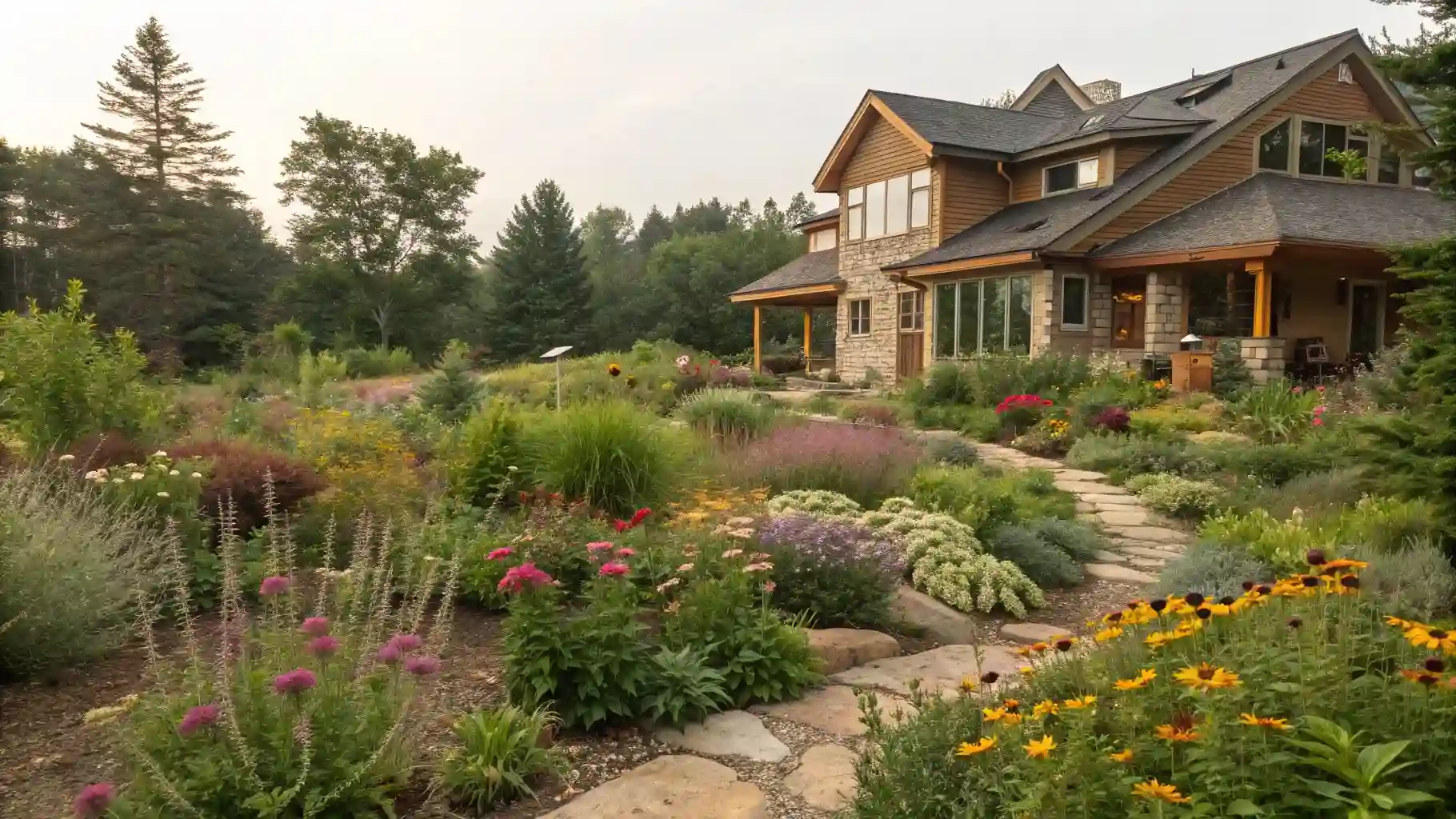
The “bringing nature home” movement is changing how people garden. You’re not just making your yard pretty anymore. You’re creating an ecosystem that supports local birds, bees, and butterflies through the cold months.
Native milkweeds, mountain mints, and asters are trending for 2025. These plants know how to survive in your climate because they evolved here. That means less work for you and more food for wildlife.
Here’s the best part: those dried seedheads you might want to cut down? Leave them. Birds need those seeds to survive winter. Your local finches will thank you.
Native berries keep birds fed when other food sources disappear under snow. And “nativars” (native cultivars) give you even more options now. You get the ecological benefits with some extra color or improved growth habits.
Think of your garden as a winter buffet. When you plant natives, you’re keeping that buffet stocked all season long. Plus, these plants handle your local weather better than imports ever could.
12. Embrace Naturalistic Planting
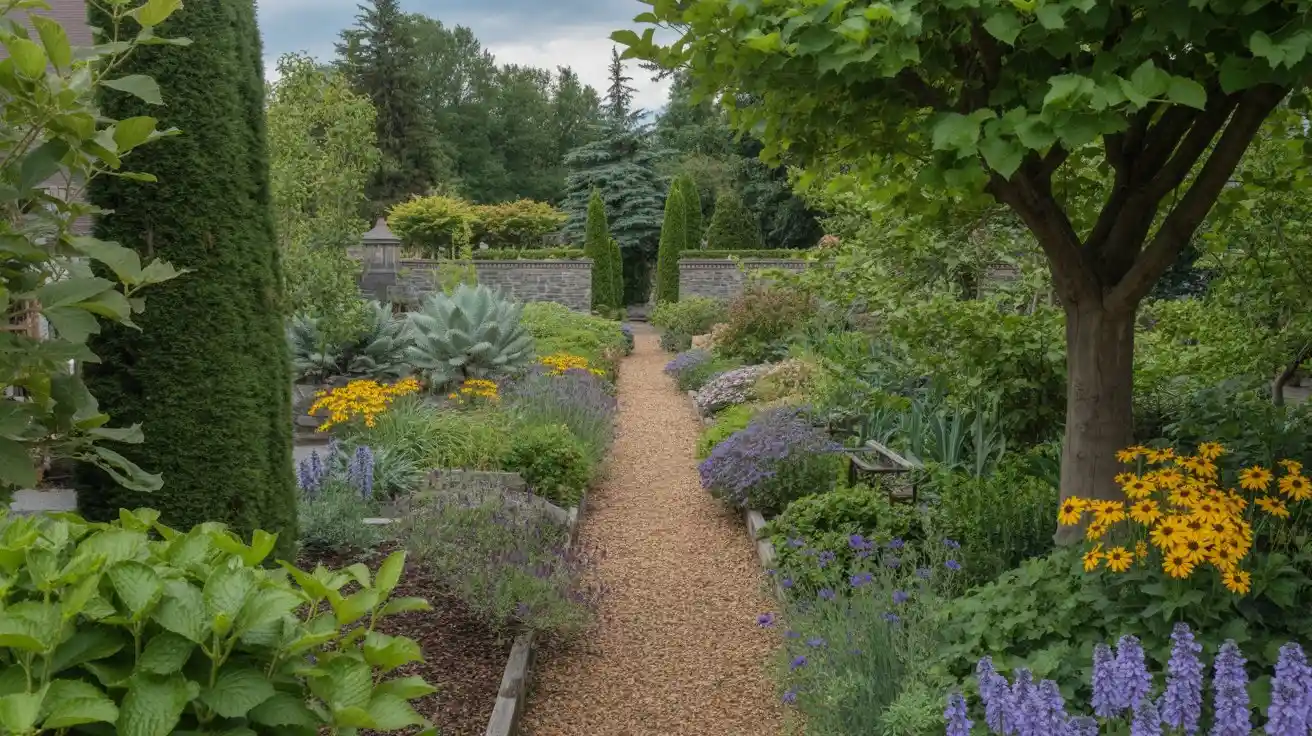
This trend is about letting your garden look more like nature intended. You don’t need everything trimmed and tidy. Gardens in 2025 are adopting a wilder, less structured look that actually makes sense.
Leave those seedheads standing. Keep the spent flowers through winter. Let the stems stay where they are. This isn’t laziness—it’s smart gardening. Those dried plants create hiding places for beneficial insects. They provide food. They add texture when everything else looks bare.
Informal borders that mimic untamed landscapes give you something interesting to look at. You get movement when winter wind blows through the grasses. You get structure from dried flower stalks covered in frost.
The maintenance part? You’ll do less work. No fall cleanup means your weekends stay free. And your garden gets that meadow-like quality that feels peaceful instead of fussy.
This approach works with nature instead of fighting it. Your garden becomes a place where things can just be.
13. Add Evergreen Ground Covers
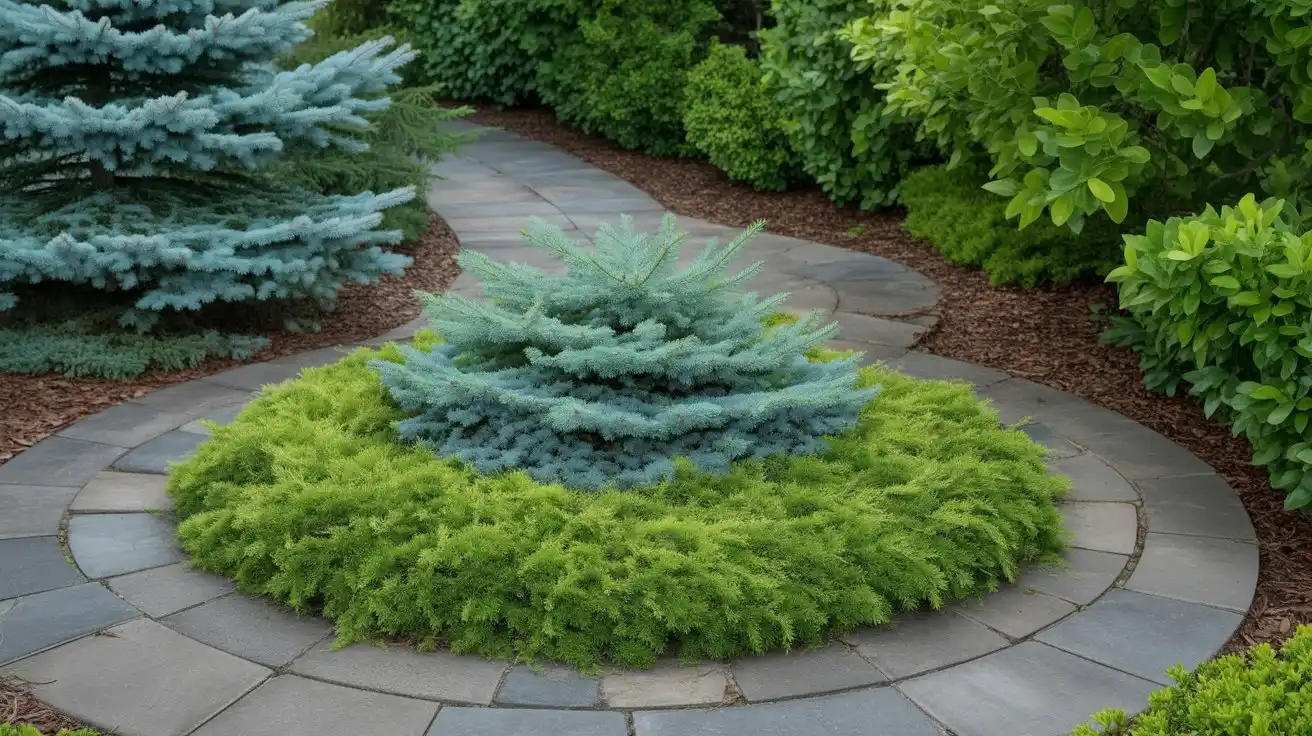
When your perennials die back, ground covers keep the soil covered. They stop erosion. They choke out weeds before spring even arrives. And they give you that green carpet effect when everything else has turned brown.
Massachusetts Kinnikinnick is one tough plant. It handles salt from sidewalks, grows in poor soil, and laughs at drought. Perfect if you want something that doesn’t need babying.
These low-growing plants fill the gaps without stealing attention from your other winter features. They’re the supporting actors that make the whole scene work better.
Ground covers save you money too. Once they spread, you’re done buying plants for those spaces. And you won’t spend spring pulling weeds from bare patches.
Think of them as living mulch. They protect plant crowns from temperature swings. They keep moisture in the soil. And they do it all while looking intentional and neat.
14. Install Outdoor Lighting
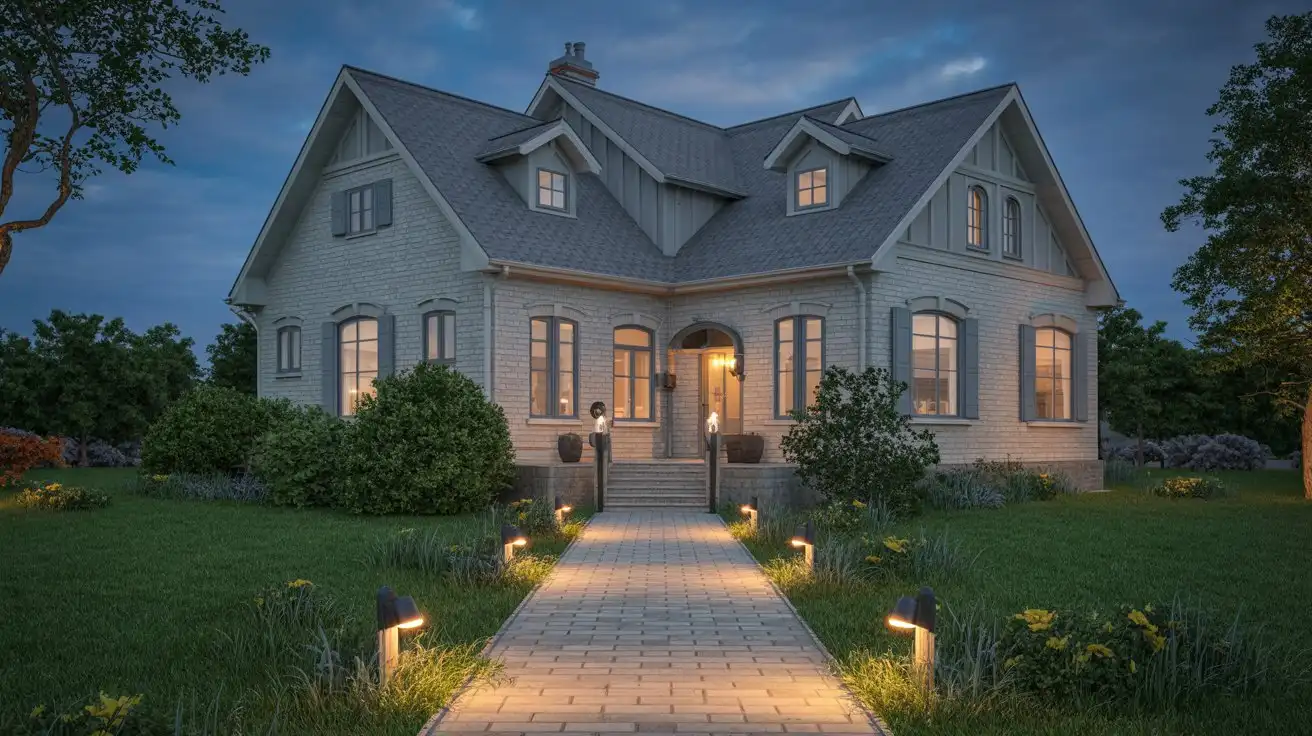
Soft outdoor lights let you enjoy your garden space even when it’s cold and dark. You’re not stuck looking at a black void through your windows. Instead, you see highlighted features that glow against the winter sky.
Uplighting works magic on interesting bark and tree structure. A well-placed spotlight can turn a simple branch pattern into artwork. Path lighting keeps you safe while making evening walks actually appealing.
The view from inside matters too. When you’re warm in your house, looking out at lit garden features creates ambiance. It makes winter feel cozy instead of bleak.
You don’t need stadium lighting here. Gentle illumination does the job better. It creates shadows and depth that harsh lights would kill.
Winter gardens have bones worth showing off. Lighting makes sure you can see them after 5 PM, which is when most people are actually home to enjoy their yards.
15. Create Focal Points with Hardscaping
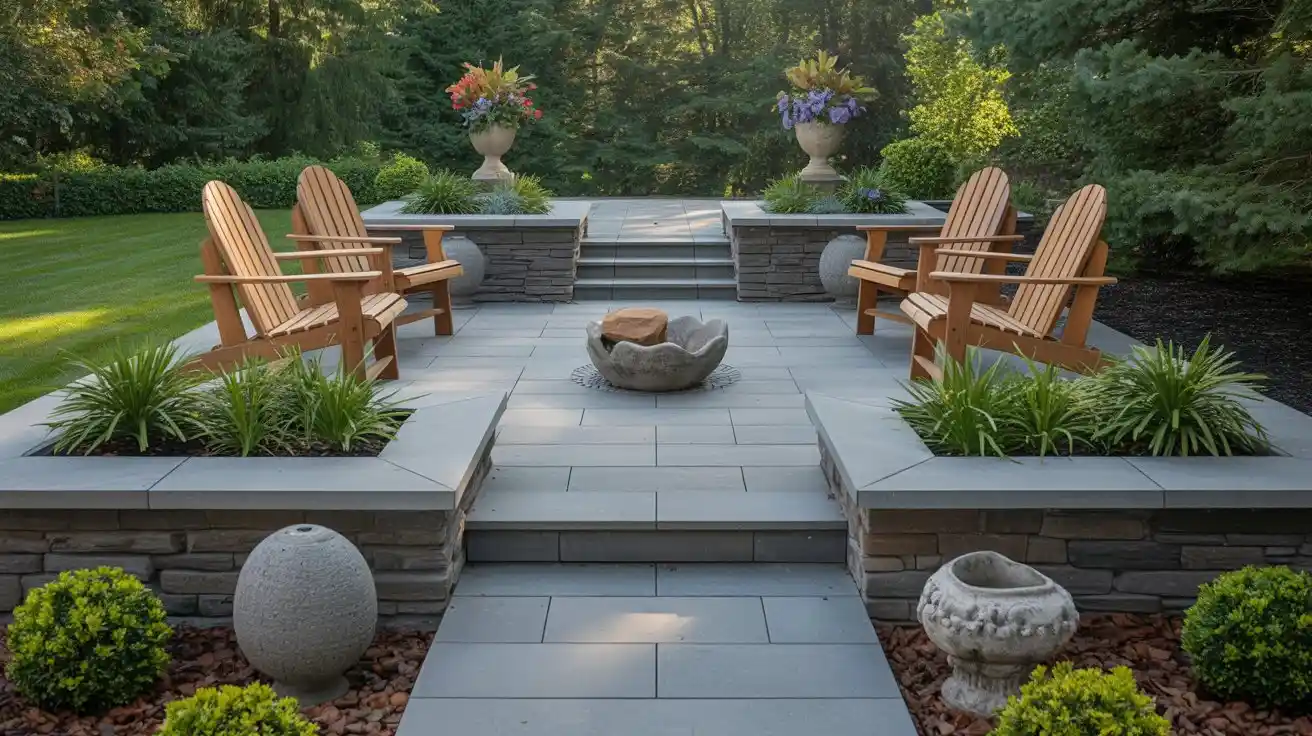
When your garden goes dormant, hardscaping becomes the star. That stone bench, that sculpture, that interesting wall—these define your garden structure when everything else has disappeared underground.
The 2025 trend toward repurposing materials means you can build focal points while staying sustainable. Old bricks make great pathways. Salvaged stone creates lasting interest.
Fire pits turn your winter garden into usable space. Add some comfortable seating and you’ve got a reason to actually go outside. These features make cold days feel inviting instead of forbidding.
Hardscaping gives you a framework. Your plants can be wild and naturalistic, but the bones of your garden stay strong and clear. That contrast works beautifully.
Think about sight lines too. Where do your eyes go when you look outside? Place your focal points there. A simple urn filled with evergreen branches can anchor an entire view.
These permanent features pay for themselves over time. You install them once and they work forever, through every season.
16. Plant Conifers in Varied Colors
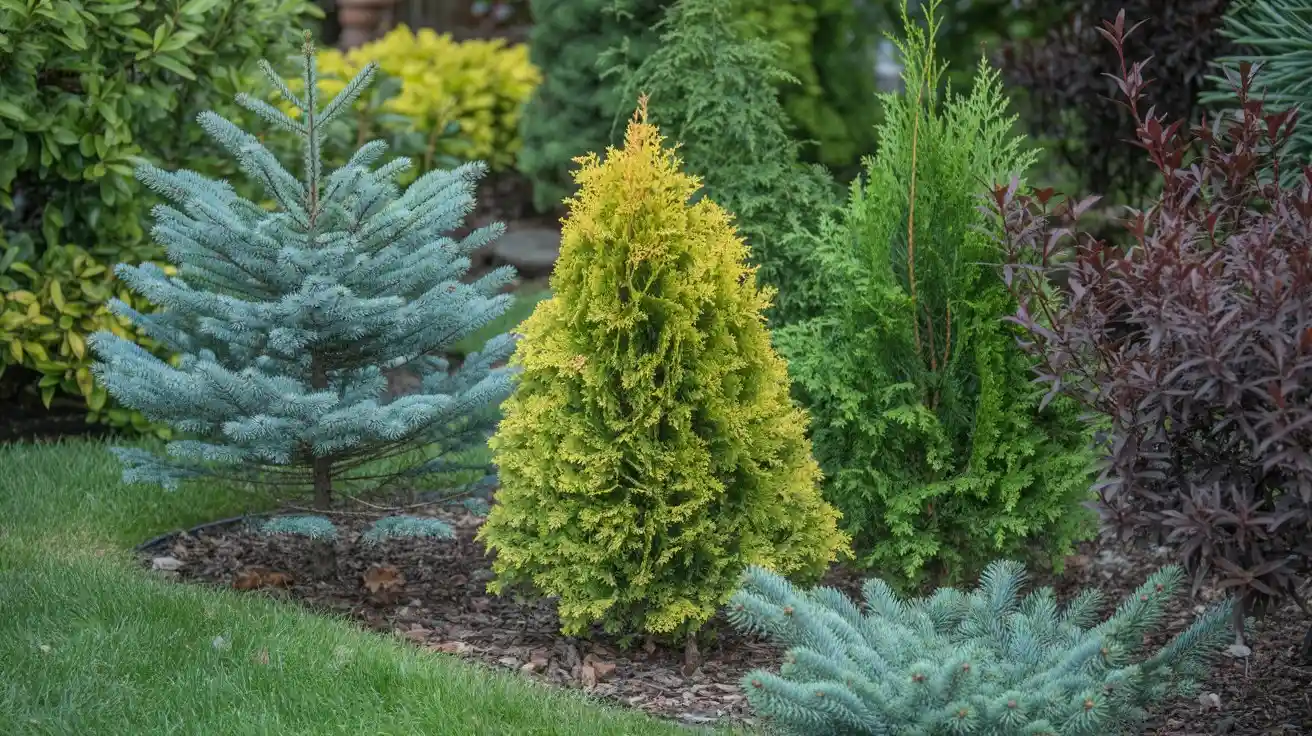
New conifer varieties give you blues, golds, and silvers. Some even change colors as winter progresses. Thuja ‘Firechief’ transforms in the depths of winter, giving you something to watch as the season unfolds.
You can find conifers in every size. Dwarf varieties work in small spaces or containers. Large specimens become anchor plants. Everything in between fills out your garden’s middle layers.
These plants provide year-round texture. Their needles catch snow and frost in ways that create unexpected beauty. The color variations mean you’re not looking at a wall of generic green.
Conifers give your garden structure when deciduous plants have dropped their leaves. They hold their shape through wind and snow. They don’t complain about cold.
Mix different colors and sizes to create depth. A blue spruce next to a gold false cypress creates natural contrast. Tall varieties in back, shorter ones in front—it’s garden design that stays beautiful all winter.
17. Design Vertical Gardens
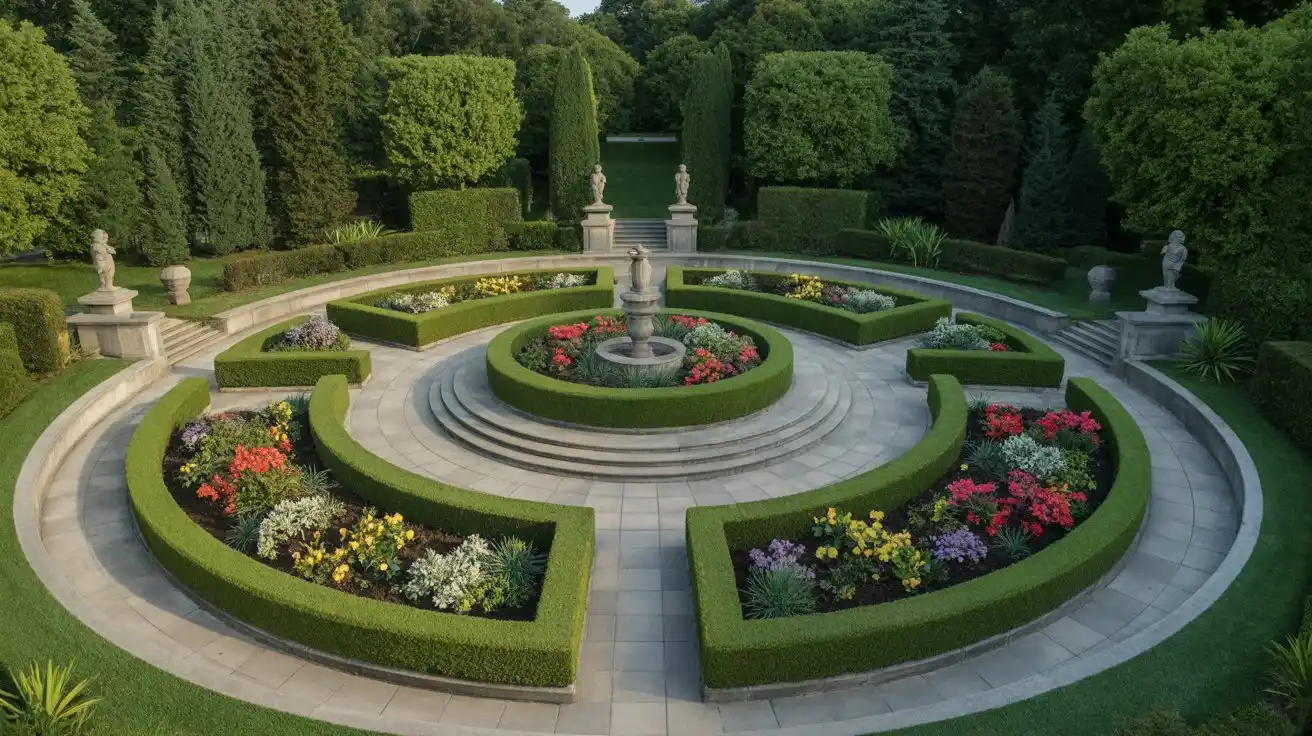
Living walls and vertical gardens are huge for 2025. They solve the space problem that plagues most gardeners. Your small yard suddenly has more room when you think vertically.
These green walls add artistic elements that flat gardens can’t match. They create living sculpture. You can use them indoors or outdoors, which means winter doesn’t stop the show.
Vertical gardens work especially well with evergreen plants. Those stay green through cold months, keeping your wall attractive year-round. Mix textures and shades of green for visual interest.
Installation options range from simple trellises to complex pocket systems. Pick what matches your skill level and budget. Even a basic vertical garden makes a statement.
These gardens become focal points automatically. They draw eyes upward. They create depth in flat spaces. And they let you grow more plants without sacrificing walking room.
18. Incorporate Fruiting Plants
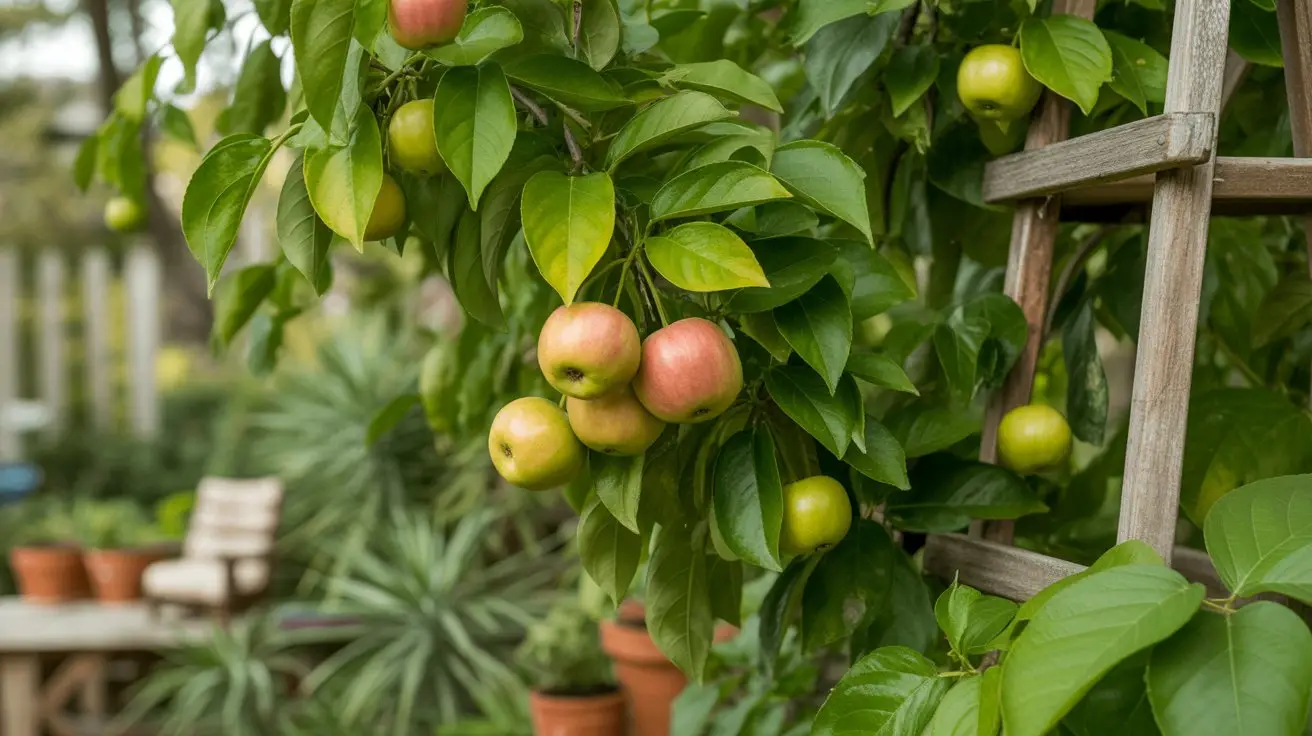
Fruit trees and edible shrubs are gaining serious ground in 2025 gardens. You get beauty and berries from the same plants. That’s efficiency that makes sense.
Honeyberries do double duty beautifully. They’re easy to care for, look ornamental, and produce fruit you can actually eat. No choosing between pretty and productive anymore.
Winterberry produces bright red berries that last through the cold months. These feed birds while giving you pops of color against snow. Crabapples do the same thing—their small fruits hang on branches well into winter.
These fruiting plants turn your yard into a wildlife restaurant. Birds flock to berry sources when other food gets scarce. You get to watch nature happen while you drink your morning coffee.
The practical side? You’re growing food with zero extra space. Your landscaping becomes your fruit garden. And many of these plants need less fussing than traditional landscape shrubs.
19. Practice Leave-the-Leaves Philosophy
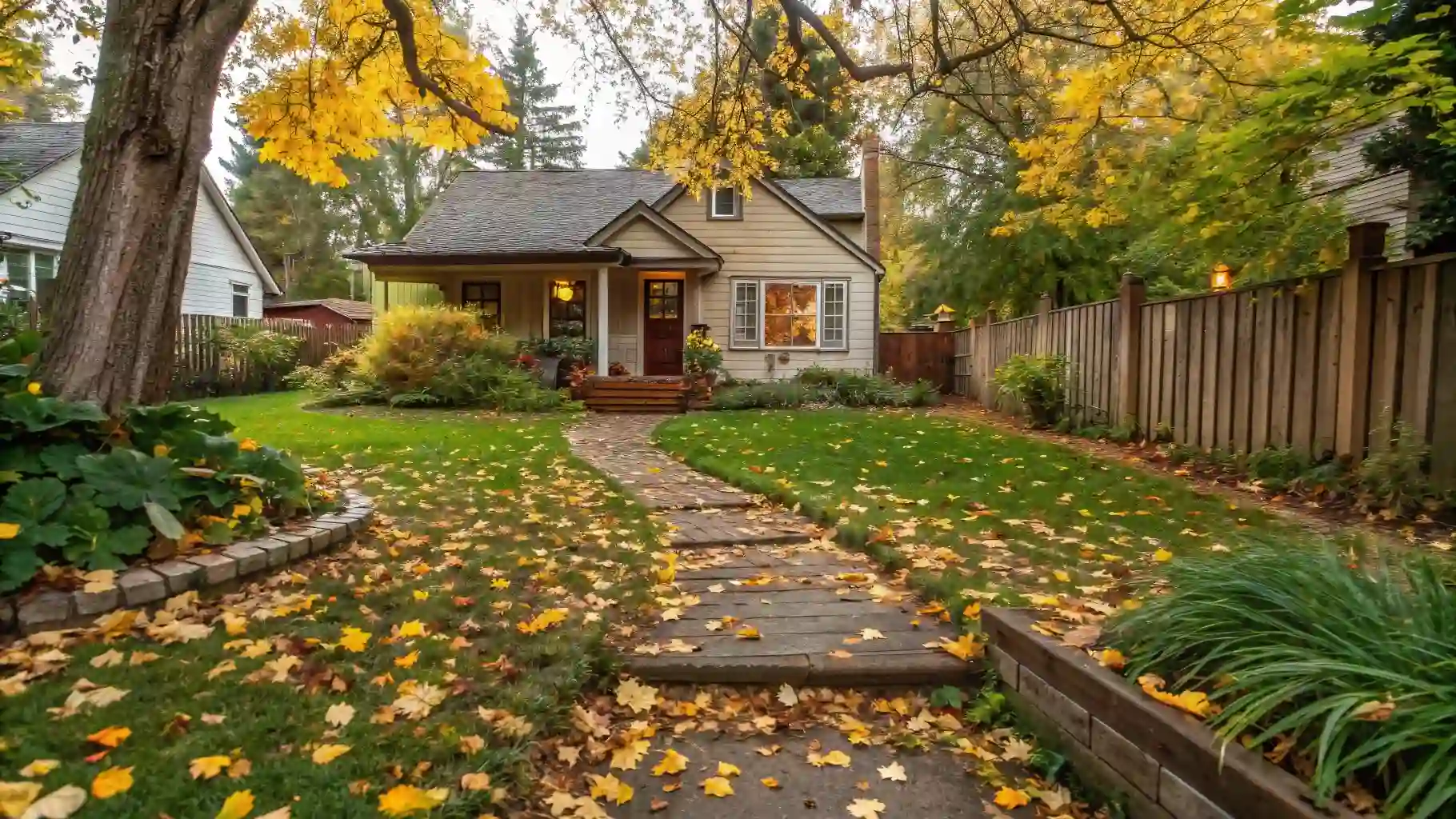
Leaving leaves and mulch on the ground protects overwintering insects. Those insects feed birds in spring. The birds need them to raise their babies. Your leaf pile becomes part of the food chain.
Those seedheads and dead stems you’d normally cut down? They’re hiding places. They’re food sources. They’re insulation for beneficial bugs that will eat your garden pests next year.
Leaves act as natural mulch. They protect plant crowns from freeze-thaw cycles that kill perennials. They break down into soil nutrients. And they save you money on bagged mulch.
This approach cuts your maintenance time while supporting the local ecosystem. You literally do less work and help nature more. That’s a trade-off anyone can love.
Your garden gets a more natural appearance too. Everything looks like it belongs there because it does. No sterile, stripped-down winter landscape that looks like a parking lot.

